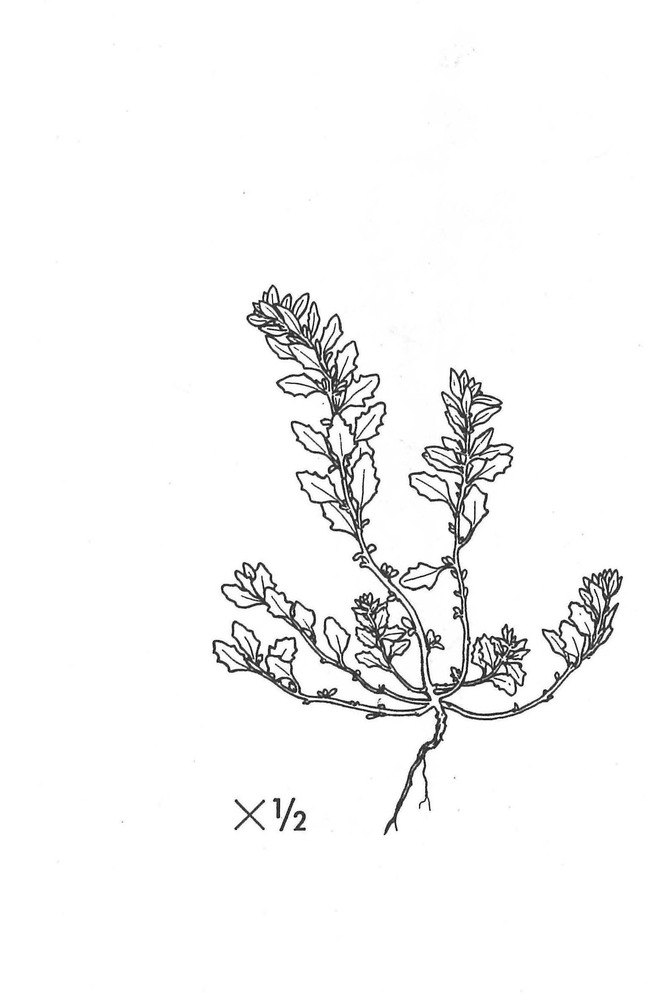| Chenopodium glaucum subsp. salinum (Standl.) Aellen | |||
| |||
| Family | Chenopodiaceae — APG family: Amaranthaceae | ||
| Synonyms | Chenopodium salinum Standl. | ||
| Description | Prostrate or ascending, branching from base, glabrous or nearly so; leaves ovate to broadly lanceolate, sinuately toothed, pale green above, densely farinose beneath; flowers in small, axillary spikes, shorter than subtending leaves; calyx green; seeds finely tuberculate. | ||
| Ecology | Waste places, saline or alkaline soil. C. glaucum described from Europe, subsp. salinum from northern New Mexico. | ||
| Taxonomy notes | Plant from hot springs on Tanana River, which has entire upper leaves and small (1 mm in diameter), foveolate-punctate seeds, has been described as var. pulchrum Aellen. Circumpolar map indicates range of C. glaucum in a broad sense; subsp. salinum occurs in northern and western North America. |
This is a digital representation of Eric Hultén’s ‘Flora of Alaska and Neighboring Territories: A Manual of the Vascular Plants’, which was published by Stanford University Press in 1968. The book was digitized by C. Webb (at UAMN) as part of the Flora of Alaska project, with funding by the US NSF (Grant 1759964 to Ickert-Bond & Webb), and with permission of Stanford University Press. Data and images © 1968 Board of Trustees of the Leland Stanford Jr. Univ. Usage licence: Creative Commons BY-NC-SA 4.0. NB: You may find OCR errors; please refer to the hard-copy if in doubt.
